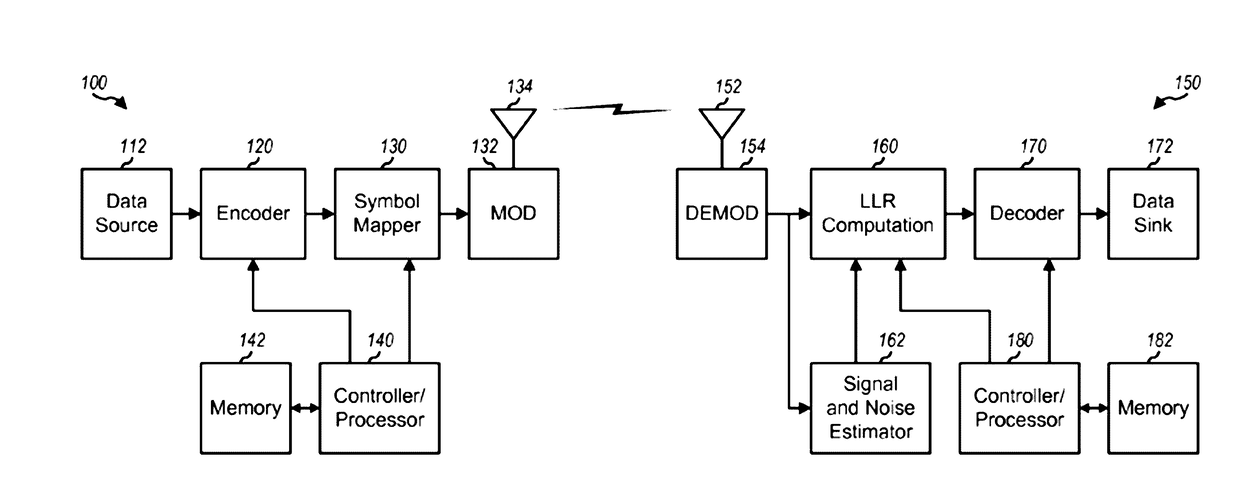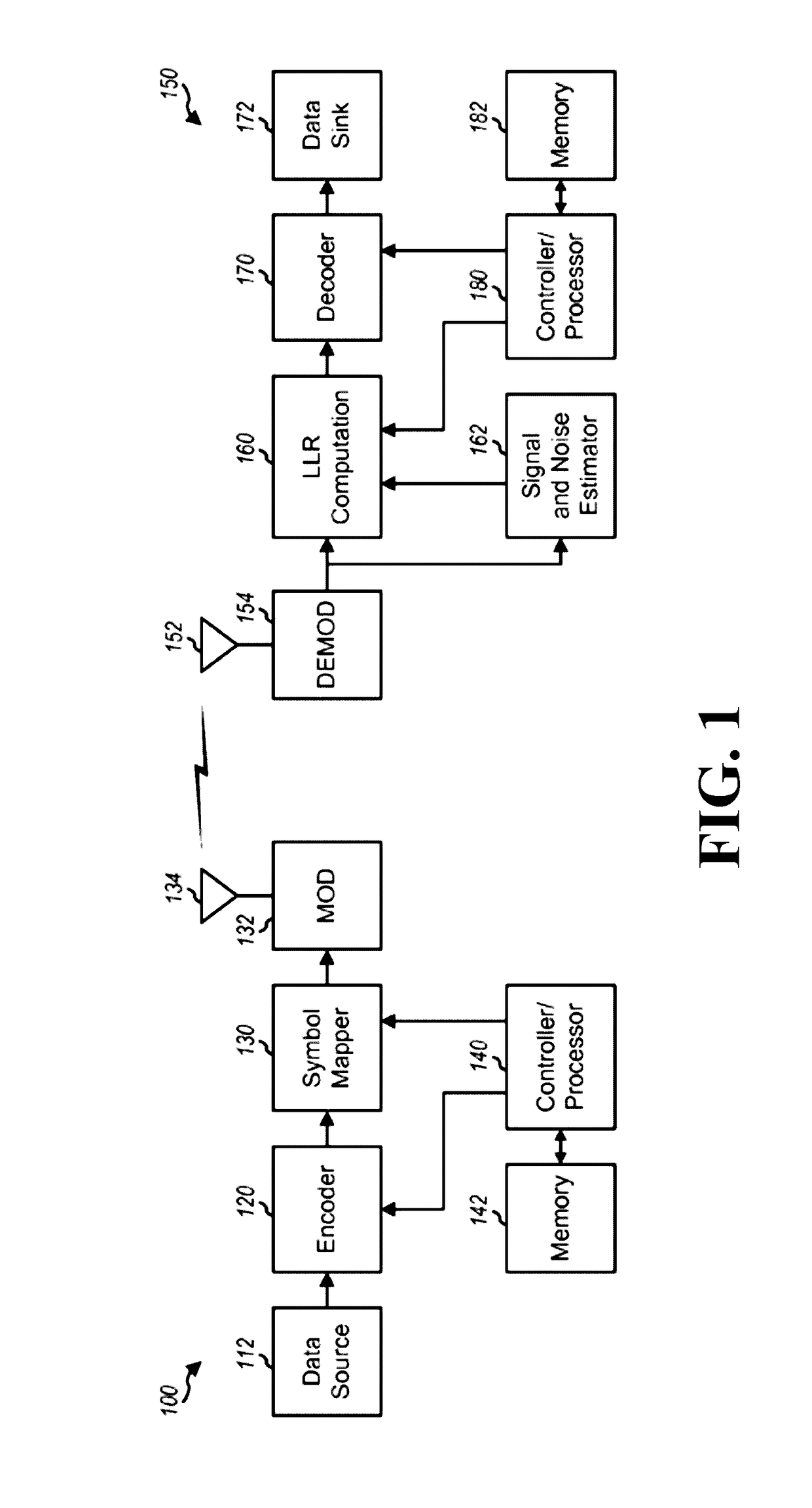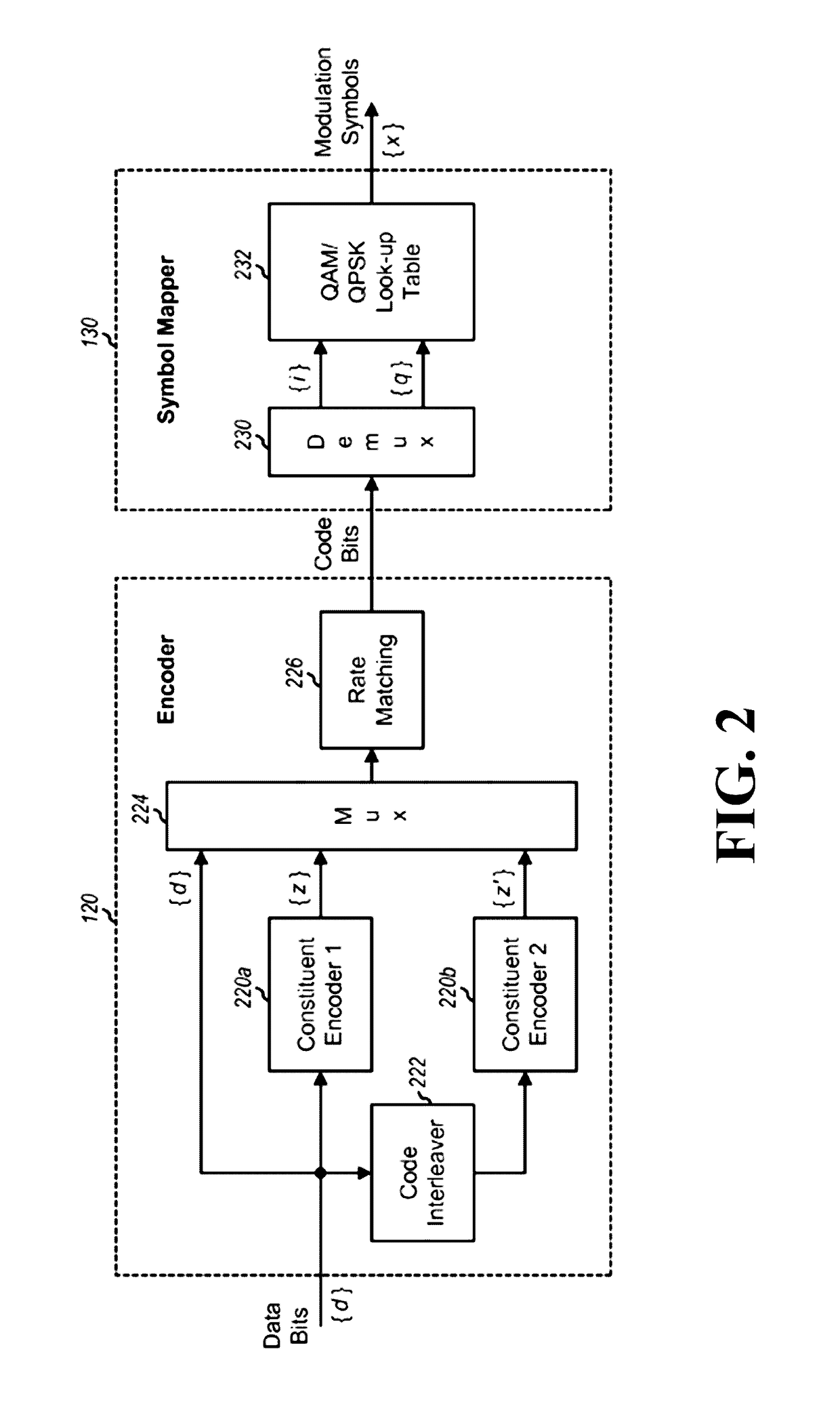Fast Log-Likelihood Ratio (LLR) Computation for Decoding High-Order and High-Dimensional Modulation Schemes
a high-order and high-dimensional modulation scheme technology, applied in the field of digital communication, can solve the problems of high power consumption, complex computation of llrs, and degradation of signal with noise, and achieve the effect of reducing the number of calculations, reducing the computational complexity of nonlinear filters, and more accurate llr approximation
- Summary
- Abstract
- Description
- Claims
- Application Information
AI Technical Summary
Benefits of technology
Problems solved by technology
Method used
Image
Examples
Embodiment Construction
[0025]FIG. 1 shows a block diagram of a design of a transmitter 100 and a receiver150 in a digital communication system. At transmitter 100, an encoder 120 receives a block of data from a data source 112, encodes the data block based on an FEC coding scheme, and provides code bits. A data block can also be referred to as a transport block, a packet, or a frame. An encoder 120 can perform rate matching and delete or repeat some or all of the code bits to obtain a desired number of code bits for the data block. The encoder 120 can also perform channel interleaving and reorder the code bits based on an interleaving scheme. A symbol mapper 130 maps the code bits to modulation symbols based on a modulation scheme, which may be QPSK, QAM, etc. A modulator (MOD) 132 can perform processing for code-division multiplexing (CDM), frequency-division multiplexing (FDM), orthogonal frequency-division multiplexing (OFDM), single-carrier FDM (SC-FDM), or single-carrier (SC). The modulator 132 then ...
PUM
 Login to View More
Login to View More Abstract
Description
Claims
Application Information
 Login to View More
Login to View More - R&D
- Intellectual Property
- Life Sciences
- Materials
- Tech Scout
- Unparalleled Data Quality
- Higher Quality Content
- 60% Fewer Hallucinations
Browse by: Latest US Patents, China's latest patents, Technical Efficacy Thesaurus, Application Domain, Technology Topic, Popular Technical Reports.
© 2025 PatSnap. All rights reserved.Legal|Privacy policy|Modern Slavery Act Transparency Statement|Sitemap|About US| Contact US: help@patsnap.com



